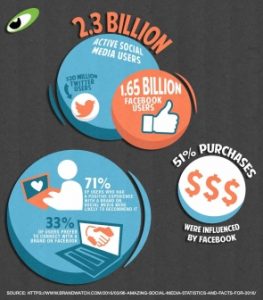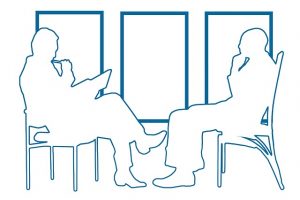To contain the spread of the virus, more people are currently working from home than ever before. But how can you be in touch with your customers now if you run a gym or offer classes of any kind?
One possible solution: videos. For companies in these (and many more) industries, live streaming has proven to be a practical solution. In the past few months, the range of online courses available on popular streaming services from categories such as sports, art and music has skyrocketed.
Laura, owner of the Kidcasso Art Studio art school, laughs when she remembers how she used to think about virtual classes. “I didn’t really believe that it could work for a company like us. We work very practically and try to cater to the children individually. I used technical aids even before the pandemic, but today the technology has helped me turn my little art school into something really big,” she said.
William Eisenmann, the cameraperson at Kidcasso Art Studio, told me three things that are really important in order to produce high-quality videos at home:
- a suitable place to film
- a streaming service
- a smartphone
Find a suitable place to film.
The best source of light is usually the sun. So, if you’re shooting in an enclosed space, find a spot by the window (the bigger the better). If the picture on your webcam or smartphone looks too bright, move a little away from the window. On the other hand, if the picture looks too dark, move closer to the window.
“The lighting is definitely the factor that has the greatest impact on the quality of a video. Even the most expensive camera can no longer get much out of a poorly lit image. But you don’t necessarily need professional lighting for a passable result. Just make sure that both your subject and the background are evenly lit” says Eisenmann.
INSIDER TIP: If the daylight is too bright, simply hang a semi-transparent shower curtain in front of the window. Diffuse light is softer and more flattering.
I spoke to other small business owners who, like Laura, learned to use live streaming to stay productive. Penny Archer is a freelance piano teacher and had previously used Skype and FaceTime for lessons from time to time, for example when her students could not come to her during heavy snowfall. But when measures for social distancing came into force in her city, it was time to come up with a longer-term solution.
She spent a day testing different devices and arrangements until she found the ideal combination. The video camera connected to her computer allows students an unobstructed view of the buttons and her hands, and an external speaker ensures the best possible sound quality.
Archer says, “You just have to think creatively, think outside the box then you realize anything is possible. I enjoy finding new ways to keep in touch with my students. This experience really brought us closer together, and I am sure that it will stay that way when we are in the same room again.”
Choose a streaming service.
There are now numerous cheap or even free streaming services to choose from. William recommends social networks like Instagram, Facebook or YouTube, but also video conference applications like Skype or Zoom.
INSIDER TIP: If you are considering Instagram then keep in mind that Instagram Live video is streamed vertically and decide for yourself if that works in your case.
Senior editor of FitnessVolt – Tom Miller explains, “We didn’t make any videos before the virus. We now have a full program of spinning and other fitness classes that our trainers stream live from home. It’s really fun!”
Miller further adds, “Millennials and Centennials are the generations that consume the most physical training activities. They are the ‘anywhere and everywhere’ generations and currently account for 80% of the fitness training market. These generations also called “digital natives” and “active generation”, have grown up with technology perfectly integrated into their daily lives, so they have different preferences and needs for the consumption of fitness experiences. Also, the trend to exercise at home continues to grow; 85% of people who attend gyms also exercise at home.”
And there has also been a lot of positive feedback from customers. “Our customers fully support us. They know that we are trying to make the most of the situation with our streaming courses. I think we found a good way to keep in touch with each other and, above all, to keep moving” says Miller.
Kidcasso also uses Zoom to stream lessons. Laura says, “The fact that we were forced to break new ground turned out to be a great opportunity for teachers, families and the company. As an entrepreneur, I learned more in one week than I have in a long time. During these difficult times, we were very fortunate that we were able to expand our range even further by using new tools.”
And piano teacher Penny thinks that the sound quality is best for her music lessons on Skype, but would like to use Zoom in the future for concerts with a small number of participants. She also plans to set up a private YouTube channel for her music school, through which her students can share videos with each other.
“My students are very important to me, and I want them to be able to keep their daily routines as normal as possible, despite everything. If you have to stay at home, then you should spend your time doing something that is good for you,” she said.
Use your smartphone for optimal results.
You don’t need a professional movie camera to shoot high quality videos. Your smartphone will do just fine. William recommends the use of smartphones because they are flexible and can be used immediately without much effort. In addition, the finished videos can be streamed directly from the smartphone.
Zach Shien, the founder of Perfect Posture, films his gentle exercises to improve posture with the iPhone. He likes to first film several exercises at once and then uses Adobe Premiere Pro to split them up into individual videos that he posts on his website, social media, and in the Perfect Posture app.
Zach’s first tip for filming is to stabilize the camera; He fixes his iPhone either on a tripod or on a flat surface. If you don’t have a tripod, a stack of books or a shelf will do the same. “Shaky pictures taken with a handheld camera are a cool stylistic device for action films, but when you’re shooting an instructional video, making an announcement, or wanting to introduce a product, it just becomes annoying” says Zach.
It is best to film yourself or your workplace from the front so that the viewer can see a realistic view. Select the image section so that it shows everything you want your customers to see. For example, if you want to demonstrate a full-body workout, the image section should be large enough so that the entire sequence of movements is visible.
Conversely, if you’re showing a product or want to demonstrate a specific technique (such as brushwork or chord fingering), a close-up may be more appropriate.
INSIDER TIP: If you are thinking of purchasing a tripod for your smartphone, Zach recommends a model on which the device can be fixed both horizontally and vertically.
Digital & Social Articles on Business 2 Community
(61)
Report Post





